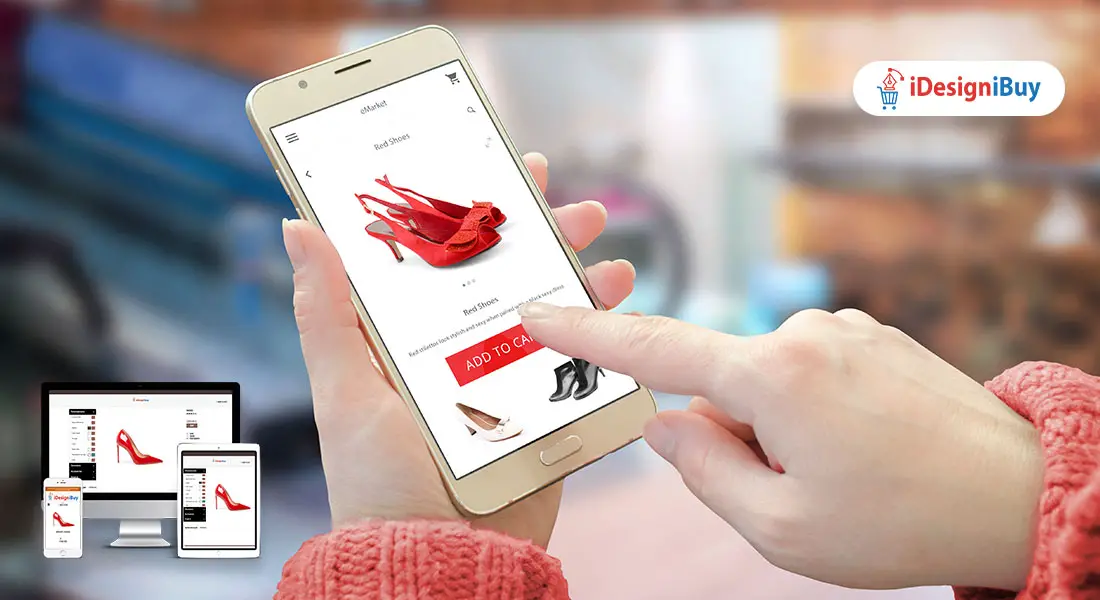Last year, the COVID-19 outbreak led to a change in consumers' shopping and consumption patterns, and the footwear industry was not exempted from its impact. However, the rise in health and fitness rose exponentially, leading to the rise in shoes and sneaker consumption. The shoe designer online understands the consumer's changing needs and offers cutting-edge technology to brands through which they can allow their users to customize their footwear, keeping health, fashion, and comfort in mind. The customization tool comes with a digital feature in default, thus enabling your buyers to make the slightest changes in their footwear design in 3d and previewing the pair of shoes before heading for the final payment.
Custom Design Shoe Enables Brands to Operate in the Online Marketplace
The footwear industry rose steadily in the US between 2008 to 2019, registering an increase in sales by 40 per cent every year. Imported footwear pairs increased by 6 per cent from 2012 to 2019, but the growth trajectory was suddenly halted by the sudden outbreak of the coronavirus, resulting in worldwide lockdowns. The world economy still seems to be recovering from the sudden disruption, the footwear industry saw the impact in the second quarter in the last year, and by the end of the year, the industry was apparently in a better form. The statistics are based on a sample set of the top 13 public footwear companies in the US. At the same time, consumer spending on the shoe industry shifted to the ecommerce domain, resulting in a 10 per cent growth in online sales and online penetration of sales of fashion shoes rising by 12 per cent. Several manufacturers and retailers found themselves adopting an omnichannel strategy and quickly moved their inventory and operations online. The shift towards the online marketplace led them to join forces that included expensive partnerships with delivery and return providers.
After understanding how changing consumer behavior has impacted the footwear industry, let us look at various factors that will help footwear manufacturers and retailers to grapple with the changing times.
Here are key trends shaping the world market for apparel and footwear that have arisen as a result of the pandemic:
Offering Various Touchpoints for Retail Industry
The pandemic is a blessing in disguise for the fashion and luxury industry. The stakeholders had been avoiding or delaying moving to online business; however, the outbreak caught them off-guard, and they were left with no option but to move to ecommerce. The pandemic has generated further momentum for the already rapidly growing e-commerce channel. According to Euromonitor International's Apparel and Footwear research, ecommerce represents 28% of global apparel and footwear value sales. As per the study, the latest digital retail strategies, such as curbside pick-up and order delivery, virtual shopping, live streaming, and appointment booking, will be pivotal for the growth in the online fashion world.
The 3D shoe design online offers similar functions to the footwear brands allowing them to capitalize on the latest trends in the retail industry and offer various touchpoints, such as mobile responsive layout, to connect with the consumer directly. The customization software enables your buyers to virtually design a pair of shoes that fits their needs and fashion style.
Providing Affordable Prices for the Product
During the pandemic, brands saw themselves offering heavy discounts to push a slow and sluggish economy. It was anticipated that the widespread global recession and rising unemployment rates would make prices lower for fashion and luxury items as consumers were anticipated to buy less of them. They will look for deals and discounts as usual, but they can also be expected to trade down on price points by compromising on brand choice or might buy fewer items. SMEs and start-ups are likely to benefit from offering basic items at low prices, given the severe economic environment.
Conclusion-
The demand for funky footwear is back as the world starts to look beyond the pandemic and resumes its normal functioning. Despite customer behavior changing for good, brands need to brace themselves to bring more novel transformations to ease and enhance consumer shopping. Though the footwear industry has successfully emerged as a true omnichannel business, it would be daunting for brands to make holistic changes in their business model. They need not worry about the latest shifts as the shoe designer online by iDesigniBuy offers robust business solutions that will enable them to operate several touchpoints, such as distribution models, inventory management, and end-to-end product development.






